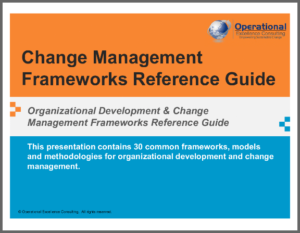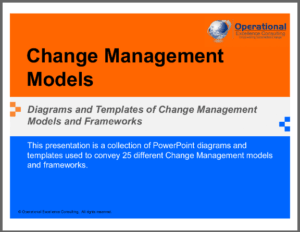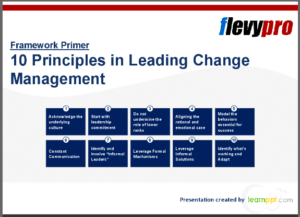Rick Mauer has developed a simple and common sense framework for dealing with resistance to change. It is profound in its simplicity – and can really make an impact on how you manage resistance through the change process.
This post outlines what the 3 levels of resistance are, how you can approach people at each level, and its usefulness for strategic project managers.
What are the Maurer 3 levels of resistance?
 The three levels of resistance offers a model to deal with resistance to change.
The three levels of resistance offers a model to deal with resistance to change.
Resistance to change is one of the most challenging change management issues. It usually happens early in the change process, and thus can derail change initiatives from the beginning, preventing any learning and feedback.
The ‘3 levels of resistance’ approach was developed by Rick Maurer, a currently practicing consultant and practitioner. It is notable for its plain language, is easy to understand, and delineates three types of common resistance that require a completely different approach to manage.
Here are the three levels of resistance:
- Level 1: I don’t understand.
- Level 2: I don’t like it.
- Level 3: I don’t like or trust you.
The three levels highlight the idea that it is important to get an accurate reading of the type of resistance you are up against. The approach to managing each of level of resistance is different and unique. The technique at one level is likely to be ineffective at managing resistance at any other level.
For a quick 2-minute intro to the topic from Rick Maurer himself, I encourage you take a moment to watch “Learn with Rick Maurer: an Elaboration on Resistance to Change”:
Let’s look in detail at each level and the unique approaches for managing resistance.
Level 1: “I don’t understand”
 People often do not understand fully what a change is about. In fact, they generally will give it only so much time – and if they still don’t understand, they may assume – justifiably so – that the change is not well-thought-out and they should not support it.
People often do not understand fully what a change is about. In fact, they generally will give it only so much time – and if they still don’t understand, they may assume – justifiably so – that the change is not well-thought-out and they should not support it.
If you are lucky, they will give you another chance.
But there are changes that do require some deep dives – and explaining and education at a deeper level. Presentations, videos, demos, blog posts, and information packets can help a lot.
Careful selection of the order in which you educate and inform people can be important as well. Getting key influencers on board can be critical. They can help to spread the message and answer questions – to support the information sharing and education efforts – as the information disseminates.
The unique thing about Level 1 is that the only approach that really works is an educational, rational approach. “I don’t understand” is a rational statement and needs a rational response. There is a lack of information – a need for clarification.
It is key to also distinguish if “I don’t understand” is really what someone means, or if they are deflecting…
Level 2: “I don’t like it”
 Sometimes people will say “I don’t understand” when what they really mean is “I don’t like it” You need to engage directly with people in order to distinguish what they are saying. Surveys and second hand information may not give you enough feedback!
Sometimes people will say “I don’t understand” when what they really mean is “I don’t like it” You need to engage directly with people in order to distinguish what they are saying. Surveys and second hand information may not give you enough feedback!
“I don’t like it” provides a clear point of resistance that requires a certain type of response. It is an emotion reaction – so it requires a response that speaks to the emotions.
Some change methods and frameworks directly address the emotional side of change:
- William Bridges Transition Model – The model addresses the transitions that people go through, as opposed to the change itself, but is also somewhat rational in nature.
- Kubler-Ross Change Model – This model enumerates the stages of change – emotional states that people go through. Knowing where people are on the change journey can help with strategies to address them.
- The Satir Model for Change – This highly personalized change model, similar to Kubler-Ross, illustrate the predictable stages of change based largely on emotional experience.
“I don’t like it” expresses resistance to a change. It generally occurs early in the process of the change journey – for any of the methods above. Thus, Level 2 (and really all 3 levels) applies to a specific part of the change process – resistance – and to the emotional side.
Level 3: “I don’t like or trust you”
 This final level of resistance points to neither a lack of information (Level 1) nor an emotional reaction (Level 2). Instead, it resists based upon a relational dislike.
This final level of resistance points to neither a lack of information (Level 1) nor an emotional reaction (Level 2). Instead, it resists based upon a relational dislike.
Here are some examples of sources of relational dislike:
- Reputation of acquiring company – If the change entails an acquisition, people may resist simply based upon a negative connotation in their minds about the acquiring company. It may or may not be based upon fact, and addressing that can help to get people beyond it.
- Experience with a type of customer – A company might want to approach a specific type of customer as part of a new market initiative. If people have had previous experiences with this new type of customer, they may resist moving forward simply based on that experience. Addressing their concerns with clear facts and even an alternative approach to the relationship that addresses previous negative experiences can be effective.
- Distrust of leadership – Management may be directing a change, but if they have not earned people’s trust, there will be emotional resistance. Management needs to ask, “What level of trust do people have for us?” It’s a hard question to ask yourself – and you may need some help for objectivity.
Level 3 requires an honest response – one that addresses relationship issues. A response that speaks to emotions or provides information may be part of that response, but alone they do not address the foundational relationship issue.
Strategy, Project Management and the 3 Levels of Resistance
Strategy and project management both sit at the point of change.
—————————————-
I recommend these strategy resources on FlevyPro (paid links):
| Change Management Frameworks Reference Guide 402-slide PowerPoint deck $179.00 |
Change Management Models 136-slide PowerPoint deck $59.00 |

|

|
| 10 Principles in Leading Change Management 17-slide PowerPoint deck $25.00 |
Lean Change Management 21-slide PowerPoint deck $25.00 |
 |
 |
—————————————-
In formulating and selling a strategy, you need to be clear about the resistance that you will encounter.
Here are some things to consider:
- Expect and accept that you will experience resistance to your strategic ideas and proposals.
- Prepare specific responses to each of the 3 levels of resistance.
- Engage directly and look to identify the level of resistance they are showing.
- Read between the lines; don’t take at face value why some says they are resisting.
- Respond and engage continuously until you feel you have defused the resistance.
As a project manager implementing a change, you may experience resistance in some different ways:
- Some stakeholders may still be resistant to the change.
- Keep a list of key stakeholders and note their levels of resistance.
- Plan specific responses to each type of stakeholder resistance, whatever the level.
- Make it your mission to get people on board by monitoring progress to reduce resistance.
- Pay special attention and manage resistance, however subtle, on your project team.
—————————————-
I recommend these PM templates (paid link):

—————————————-
Thinking and acting strategically is not an isolated act. It is a team sport, and you will need to pull together people by managing resistance at all levels.
Strengths and Weaknesses of Maurer’s 3 Levels of Resistance
 The main thing to consider here is that Maurer’s 3 levels of resistance is not a complete change framework or method.
The main thing to consider here is that Maurer’s 3 levels of resistance is not a complete change framework or method.
The 3 levels of resistance is a model to help you with common problems related to change. It provides perspective for seeing through the fog at the resistance that you are facing.
In addition, it provides a set of techniques, via the unique approaches required for each level, to address any resistance.
The 3 levels are best used in conjunction with other change methodologies. For example, in addition to the emotion-centric change frameworks mentioned above, you might use Maurer’s 3 levels in conjunction with some more rational-centric change management approaches, such as:
- The Lewin Change Model – This model characterizes Change as occurring in three simple stages – Unfreeze, Change, and Refreeze.
- The John Kotter Change Model – The Kotter Model provides an 8-step process for implementing a Change. It is focused on achieving goals throughout the change management process.
Conclusion
Maurer’s three levels of resistance – “I don’t understand”, I don’t like it”, and “I don’t trust you” – provide a framework for managing resistance through the change process.
What experiences do you have managing resistance during a change initiative?
I recommend you read Rick Maurer’s post “Tips for working with the three levels of support and resistance” at EnergyBarTools.
John Reiling –
Thanks for featuring the model I created to work with resistance and support for change. I think you did a terrific job of capturing the resistance side of the equation. . . In my earlier writing I don’t give support its due. If I were to add anything to your article, I would say that those three levels have a positive side as well – I get it. I like it. And I have trust and confidence in you. What I wish I had written those many years ago was that the absence of resistance only gets us to neutral. We need the support and forward momentum that can come from the positive side. Thanks again for such a thoughtful piece.
Rick
Rick, thanks for your comment! I am honored that you took the time and appreciate your candid thoughts. Looking at the positive side was a real twist for me when I read it! I think what you are trying to say – regarding ‘neutral’ in the absence of resistance – is that resistance actually has a positive side. When you deal effectively with resistance, you actually create positive forward progress, whereas that does not happen when there is a lack of resistance. Thanks again!
Interesting – learned this concept in my MBA program – check out Dr O explanation – https://www.oventhal.com/blog/2019/2/13/the-evolution-of-the-shewhart-cycle
That’s a fascinating article Mike! It’s really interesting how the PDCA/PDSA and related models evolved and influenced each other! You can also see the signs of the time – the types of problems people were dealing with – in the evolution.
Thanks for shoring!
In the context of “applied project management” “strategic project management” is an oxymoron. Yes, there are strategic projects, but where have you ever seen a project manager at least in an owners organization (as opposed to a contractor) empowered to make strategic decisions? As project managers, we are the “make it happen” people. The Lieutenants, Captains and Majors, responsible for TACTICS. https://pmworldlibrary.net/wp-content/uploads/2021/11/pmwj111-Nov2021-Giammalvo-principle-based-project-management-the-whole-truth.pdf
And again in the context of project management, how do you reconcile the words of General Omar Bradley that “amateurs study strategy while professionals study logistics.” Or the words of practical wisdom from Field Marshal Helmuth von Moltke that “no plan survives first contact with the enemy” reiterated by General Eisenhower that “plans are useless but planning is essential?”
Trying to manage change goes back to Newton’s Three Laws of Motion- https://www1.grc.nasa.gov/beginners-guide-to-aeronautics/newtons-laws-of-motion/
Thank you for your comment, Dr. Giammalvo. Let me respond:
Re applied vs strategic project management, I think that greater understanding of strategy helps project managers to have greater and deeper perspective as they manage projects. They probably will not make strategic decisions, as you indicated, but can influence and contribute, and they may be better able to make it happen with that perspective. It also may help them to advance in their careers.
I take Omar Bradley’s comment with a grain of salt – I would be quite surprised if he never studied military strategy! But your point is well taken. I would say that, just as military success does not happen without great logistics, strategy does not get implemented without well executed projects and strong project management. Project management is where the rubber meets the road.
Furthermore, the process of planning is important, but of course things will change once in action. A popular phrase today, strategic agility, refers to the process of constantly adapting plans based upon experience. Just as project management has become more agile, strategy has too.
Thank you again for your comment!
I’m not sure I get it, John, but I love you and look forward to learning more! – Craig
Thanks Craig – we’ll discuss!